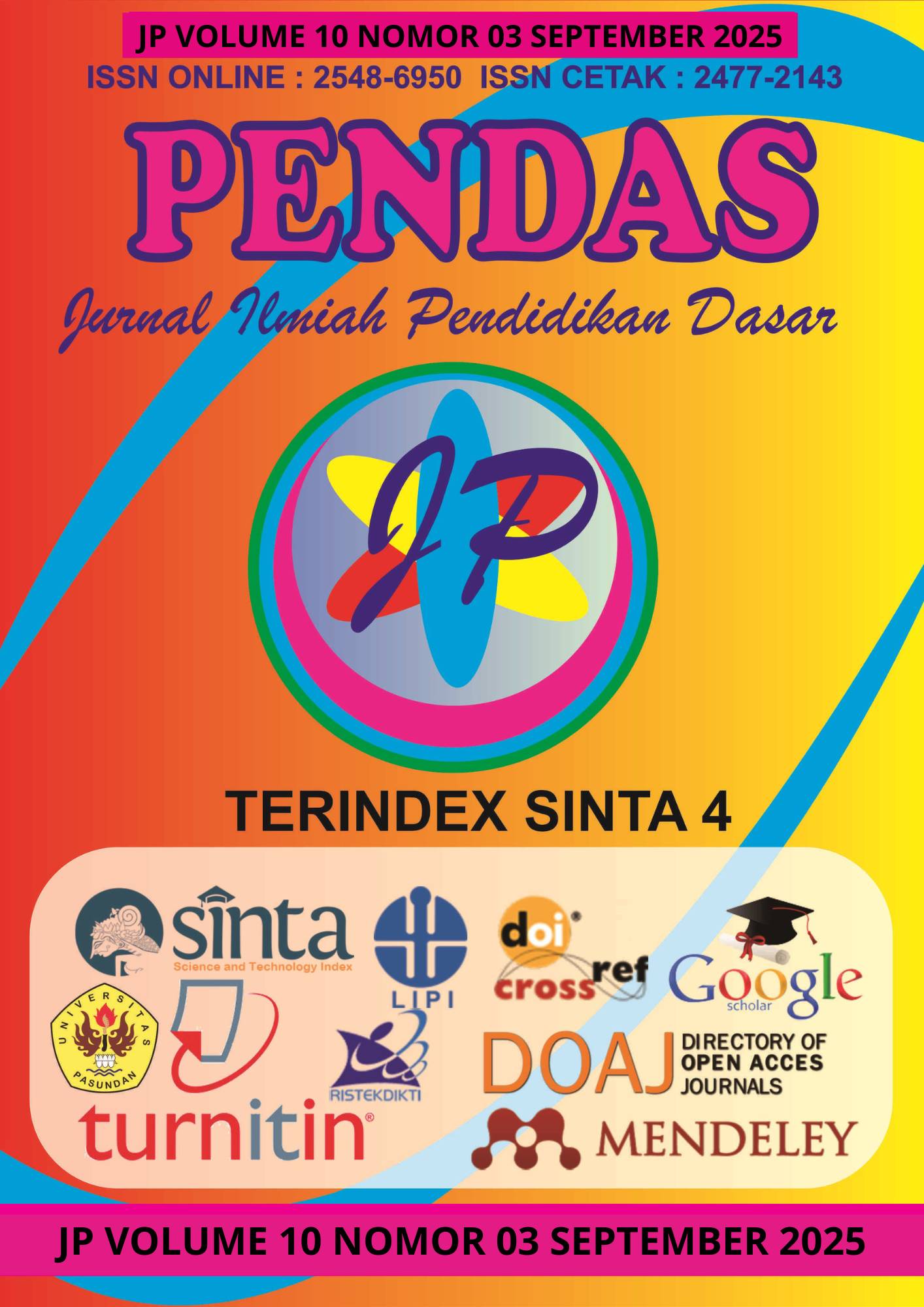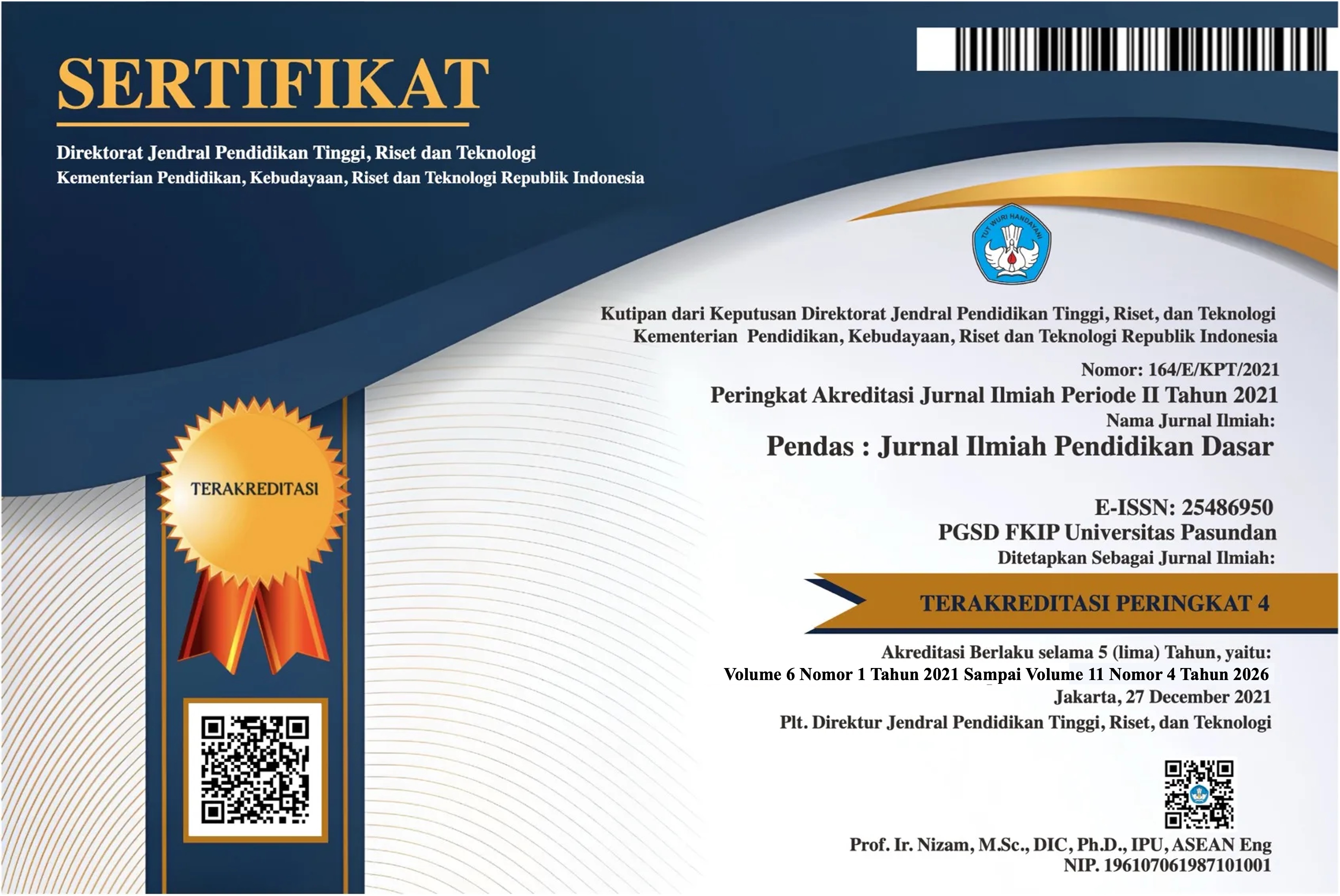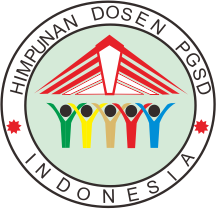KEMAMPUAN BERPIKIR KREATIF SISWA PADA PEMBELAJARAN IPAS MELALUI PENGGUNAAN BUKU INTERAKTIF DI SEKOLAH DASAR
DOI:
https://doi.org/10.23969/jp.v10i03.30155Keywords:
creative thingking, interactive books, science, learning, elementary schoolAbstract
This study aims to describe the creative thinking skills of fourth-grade students at Tirtawangunan Elementary School in learning Natural and Social Sciences (IPAS) through the use of interactive books. Creative thinking skills are one of the important competencies in facing the challenges of the 21st century, which include aspects of fluency, flexibility, originality, and elaboration. The research method used is descriptive qualitative with data collection techniques in the form of observation, interviews, and documentation. The subjects of this study were fourth-grade students who participated in learning using interactive books for several meetings. The results of the study indicate that the use of interactive books can improve students' creative thinking skills, indicated by increased student involvement in the learning process, the diversity of ideas generated, and students' ability to develop and elaborate ideas in an original manner. Thus, interactive books are proven to be an effective learning medium in fostering students' creative thinking skills in IPAS learning in elementary schools.
Downloads
References
Kemendikbud. (2019). Panduan Implementasi Kurikulum 2013 Revisi SD. Kementerian Pendidikan dan Kebudayaan.
Munandar, U. (2019). Pengembangan Kreativitas Anak Berbakat. Jakarta: Rineka Cipta.
Putri, A. D. (2019). Pengembangan Media Buku Interaktif untuk Meningkatkan Kreativitas Siswa Sekolah Dasar. Jurnal Pendidikan Dasar, 10(2), 123–132.
Sari, M., & Nugroho, R. A. (2019). Analisis Pembelajaran Sains di SD: Hambatan dan Solusinya. Jurnal Inovasi Pendidikan, 6(1), 45–52.
Sugiyono. (2024). Metode Penelitian Kualitatif, Kuantitatif dan R&D. Bandung: Alfabeta.
Suyanto, & Asep. (2019). Pengaruh Media Interaktif terhadap Hasil Belajar Siswa SD. Jurnal Teknologi Pendidikan, 21(1), 45–52
Hidayati, N. (2019). Buku Interaktif dalam Meningkatkan Motivasi Belajar Siswa. Jurnal Teknologi Pendidikan, 8(2), 120-130.
Sari, R. (2017). Buku Interaktif sebagai Media Pembelajaran. Prosiding Seminar Nasional Pendidikan, 2(1), 100-110.
Arsyad, Azhar. (2015). Media Pembelajaran. Jakarta: RajaGrafindo Persada.
Lestari, S., & Widodo, A. (2024). Tantangan Akses Teknologi dalam Pembelajaran Digital di Sekolah Dasar. Jurnal Pendidikan dan Teknologi Informasi, 10(1), 25-34. https://doi.org/10.1234/jpti.v10i1.2024
Sadiman, A. S., dkk. (2011). Media Pendidikan. Rajawali Pers.
Sari, D., & Rahmawati, N. (2018). Evaluasi Media Pembelajaran Digital. Jurnal Pendidikan, 4(1), 23-30.
Suparno, P. (2010). Kreativitas dan Pendidikan. Jakarta: Universitas Sanata Dharma Press.
Lestari, S., & Widodo, A. (2024). Tantangan Akses Teknologi dalam Pembelajaran Digital di Sekolah Dasar. Jurnal Pendidikan dan Teknologi Informasi, 10(1), 25-34. https://doi.org/10.1234/jpti.v10i1.2024
Prasetyo, B., & Wulandari, S. (2023). Pengaruh Media Pembelajaran Interaktif terhadap Pemahaman Materi dan Kemampuan Berpikir Kreatif Siswa. Jurnal Pendidikan dan Teknologi, 9(3), 145-156.https://doi.org/10.5678/jpt.v9i3.2023
Downloads
Published
Issue
Section
License
Copyright (c) 2025 Pendas : Jurnal Ilmiah Pendidikan Dasar

This work is licensed under a Creative Commons Attribution 4.0 International License.



















